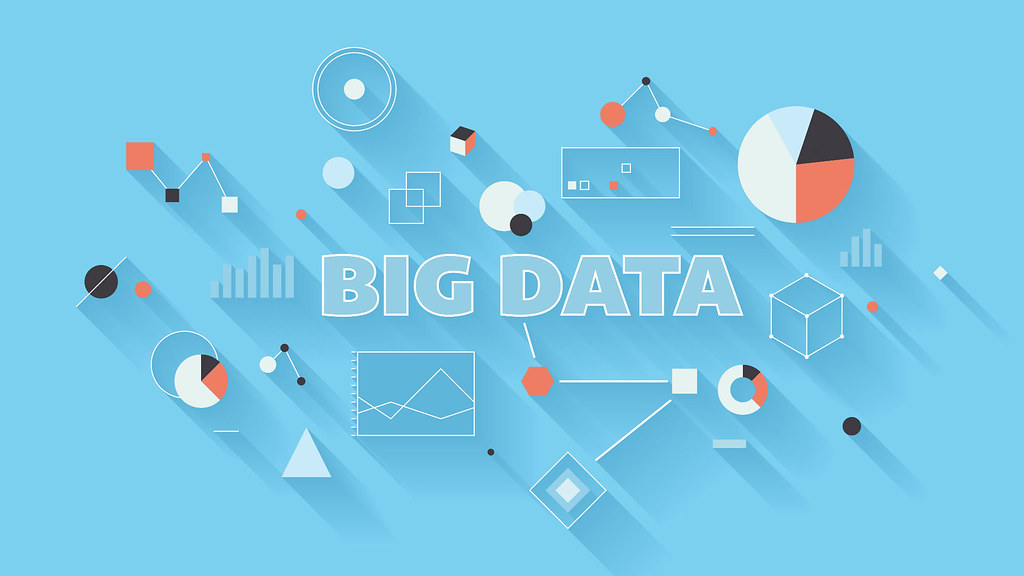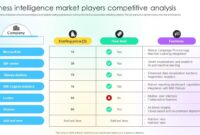Data Driven Marketing Strategies Using Business Intelligence is revolutionizing the way businesses approach their marketing efforts. With the explosion of data in today’s digital landscape, companies are increasingly leveraging advanced analytics and business intelligence tools to craft strategies that resonate with their target audiences. This approach not only enhances decision-making but also drives efficiency and effectiveness, making it an essential component in the modern marketer’s toolkit.
By understanding customer behavior, preferences, and trends, businesses can tailor their marketing campaigns to achieve better results. This integration of data and marketing strategies empowers organizations to stay ahead of the competition and create memorable customer experiences.
In today’s fast-paced world, the importance of effective communication cannot be overstated. Whether in personal relationships, professional settings, or even casual interactions, clear and concise communication plays a crucial role in ensuring that messages are understood and that connections are nurtured. This article will explore various aspects of communication, including its significance, challenges, tips for improvement, and the impact of technology on how we communicate.
The Significance of Effective Communication
Effective communication is the backbone of successful relationships and interactions. In a professional context, it can enhance teamwork, foster collaboration, and lead to better decision-making. When team members communicate openly and effectively, they are more likely to share ideas, provide constructive feedback, and work towards common goals. In personal relationships, clear communication helps to build trust, resolve conflicts, and ensure that both parties feel heard and understood.
Moreover, effective communication is not just about speaking or writing well; it also involves active listening. This means paying attention to what others are saying, asking clarifying questions, and showing empathy. By practicing active listening, individuals can demonstrate that they value the opinions and feelings of others, which can strengthen relationships and foster a positive environment.
Challenges in Communication
Despite its importance, communication can often be fraught with challenges. Misunderstandings, assumptions, and cultural differences can create barriers that hinder effective communication. For instance, a message conveyed in one cultural context may not be interpreted the same way in another. Language barriers can also pose significant challenges, especially in diverse environments where individuals speak different languages or dialects.
Another common issue in communication is the tendency to make assumptions about what others understand. This can lead to incomplete or unclear messages, resulting in confusion and frustration. Additionally, emotions can play a significant role in how messages are received and interpreted. For example, if someone is feeling anxious or upset, they may misinterpret a neutral comment as a personal attack, further complicating the situation.
Tips for Improving Communication Skills
Fortunately, there are several strategies individuals can adopt to improve their communication skills and overcome the challenges they face:
1. Practice Active Listening: As mentioned earlier, active listening is essential for effective communication. Focus on understanding the speaker’s message rather than thinking about your response while they are talking. Show that you are engaged by nodding and providing verbal affirmations.
2. Be Clear and Concise: Strive to express your thoughts clearly and concisely. Avoid using jargon or overly complex language that may confuse your audience. Instead, opt for straightforward language and structure your messages logically.
3. Ask Questions: If you are unsure about something, don’t hesitate to ask clarifying questions. This not only demonstrates your interest in the conversation but also helps to ensure that you fully understand the message.
4. Be Mindful of Non-Verbal Cues: Body language, facial expressions, and tone of voice can significantly impact how messages are received. Be aware of your own non-verbal cues and pay attention to those of others to gauge their reactions.
5. Practice Empathy: Try to see things from the other person’s perspective. This can help you respond more thoughtfully and reduce the likelihood of misunderstandings.
6. Stay Open-Minded: Be receptive to feedback and different viewpoints. Effective communication is a two-way street, and being open to others’ opinions can lead to richer discussions and better outcomes.
7. Leverage Technology: In today’s digital age, technology can aid communication in numerous ways. Utilize tools like video conferencing, instant messaging, and collaborative platforms to enhance your communication, especially in remote or hybrid work environments.
The Impact of Technology on Communication
The advent of technology has transformed the way we communicate, offering both opportunities and challenges. On one hand, technology has made it easier to connect with others across distances. Social media, email, and instant messaging applications allow individuals to communicate instantly, regardless of geographical barriers. This can lead to more frequent interactions and the ability to maintain relationships over long distances.
However, reliance on technology can also lead to a decrease in face-to-face interactions, which are essential for building strong connections. Non-verbal cues are often lost in digital communication, making it harder to gauge emotions and intentions. Moreover, the informal nature of many digital communication platforms can lead to misunderstandings and a lack of professionalism in certain contexts.
In addition, the constant barrage of notifications and messages can create a sense of overwhelm, making it difficult to focus and engage in meaningful conversations. Therefore, it is crucial to strike a balance between leveraging technology for communication and ensuring that it does not hinder personal connections.
Conclusion
Effective communication is an essential skill that can significantly impact both personal and professional relationships. By understanding its significance, recognizing the challenges, and implementing strategies to improve communication skills, individuals can enhance their interactions with others. In a world that is increasingly reliant on technology, finding ways to communicate effectively while maintaining meaningful connections is more important than ever. By practicing active listening, being clear and concise, and embracing empathy, we can all contribute to a more understanding and connected world.
In conclusion, Data Driven Marketing Strategies Using Business Intelligence are key to navigating the complexities of today’s market. As businesses continue to adapt and innovate, the insights gained from data analysis will play a critical role in shaping successful marketing strategies. By embracing these methodologies, marketers can not only enhance their campaigns but also foster deeper connections with their customers, paving the way for future growth and success.
Detailed FAQs: Data Driven Marketing Strategies Using Business Intelligence
What is data driven marketing?

Data driven marketing refers to strategies that use data analysis to inform decisions and optimize marketing efforts.
How does business intelligence support marketing?
Business intelligence provides insights into customer behavior and market trends, enabling marketers to make informed decisions.
What tools can be used for data driven marketing?
Common tools include Google Analytics, CRM software, and data visualization platforms.
What are the benefits of using data in marketing?
Benefits include improved targeting, personalized customer experiences, and increased campaign effectiveness.
How can small businesses implement data driven marketing?
Small businesses can start by collecting customer data, using affordable analytics tools, and focusing on specific marketing goals.


